Apple revolutionized the technology industry with the release of the original iPad, but the tablet industry has come a long way since then; thanks to the birth of the
Android tablet.
Since the release of the original iPad, modern consumers have been looking for worthy alternatives that match the collective features and price of Apple’s infamous iOS tablet.
But consumers aren’t the only ones looking for alternatives to the iPad. In fact, finding a worthy match is such an obsession for the tech world that the phrases “iPad killer” and “iPad competitor” have been coined, and used quite often.
The obvious truth of such statements is that there has yet to be a product that encapsulates the public attention and provides what Apple’s products do; keep in mind this does not mean that there will never be an equal. It just means that Apple’s products provide polish and ease of use first and foremost, which has been proven to remain an important feature for many consumers.
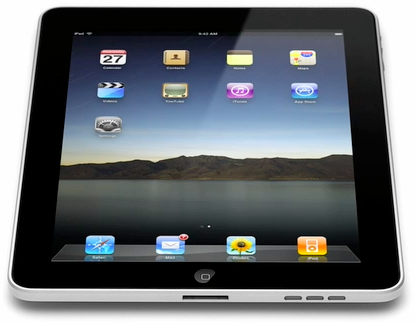 Many don’t know that the Google Android OS is just as polished and easy to use, and it has also made its way to tablet devices. Fortunately for anyone interested in worthy iPad competition, there has been a significant rise in the release of Android-based tablets. Android tablets offer worthy competition to the iPad and include identical, if not better, features which are often provided at a lower price.
Many don’t know that the Google Android OS is just as polished and easy to use, and it has also made its way to tablet devices. Fortunately for anyone interested in worthy iPad competition, there has been a significant rise in the release of Android-based tablets. Android tablets offer worthy competition to the iPad and include identical, if not better, features which are often provided at a lower price.
For instance, the Asus Transformer TF101, which was released shortly after the iPad 2, included a dual core Nvidia Tegra 2 processor, a front and rear camera (the original iPad did not include a camera at all), and is available in 16GB or 32GB models starting at $399. The Transformer is also compatible with a keyboard dock that converts the tablet into a portable netbook, hence the name “Transformer”.
Worthy Android Tablet Models
Unfortunately, Android tablets have flooded the market- namely because most businesses realize the true potential of the modern tablet. But just because there are a large number of tablets to choose from, does not mean that every tablet is worth the money or even worth a consumer’s time.
That is why we’ve compiled a list of the best Android tablet models available on the market that also offer a worthy alternative to the Apple iPad 2.
Android Tablet Models and Specifications
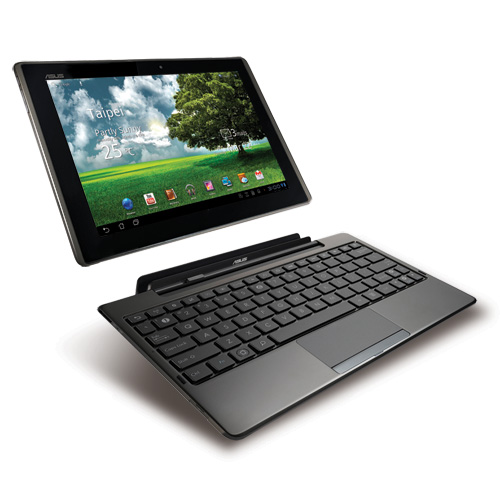 Asus Transformer TF101
Asus Transformer TF101 – The Asus Transformer is a 10″ Android tablet running version 3.1 (Honeycomb) with a 3.2 OTA update, an Nvidia Tegra 2 (1GHz) dual-core processor, 1GB DDR2 installed RAM, a 10.1″ LED capacitive touchscreen, a 1.2MP front facing camera, a 5MP rear facing camera, integrated wireless 802.11 b/g/n support, an HDMI output, and a microSD card slot for added storage. The Transformer is available in two separate models, a 16GB ($399) and a 32GB ($499) model. The Asus Transformer is also compatible with a keyboard dock ($159.99) that adds USB 2.0 support, an increased battery life by 6.5 hours, and an extra microSD card slot for even more internal storage (32GB maximum).
– The Asus Transformer is a 10″ Android tablet running version 3.1 (Honeycomb) with a 3.2 OTA update, an Nvidia Tegra 2 (1GHz) dual-core processor, 1GB DDR2 installed RAM, a 10.1″ LED capacitive touchscreen, a 1.2MP front facing camera, a 5MP rear facing camera, integrated wireless 802.11 b/g/n support, an HDMI output, and a microSD card slot for added storage. The Transformer is available in two separate models, a 16GB ($399) and a 32GB ($499) model. The Asus Transformer is also compatible with a keyboard dock ($159.99) that adds USB 2.0 support, an increased battery life by 6.5 hours, and an extra microSD card slot for even more internal storage (32GB maximum).
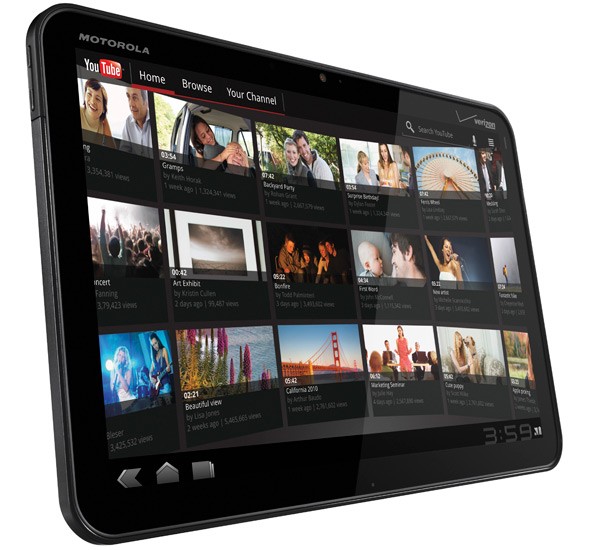 Motorola Xoom
Motorola Xoom – The Motorola Xoom is a 10″ Android tablet running version 3.0 (Honeycomb) with OTA updates to latest version, an Nvidia Tegra 2 (1GHz) dual-core processor, 1GB DDR2 installed RAM, a 10.1″ LED back-lit capacitive touchscreen display, a 2MP front facing camera, a 5MP rear facing camera with dual-LED flash, integrated wireless 802.11 b/g/n support, and a microSD card slot for additional storage up to 32GB maximum. The Motorola Xoom also includes Bluetooth 2.1 functionality, and full 720p HD video capture support through the rear facing camera. The Xoom also includes several peripheral accessories and external docks, namely the standard dock which charges the battery and props the device up for media viewing and also includes an HDMI output for use with any modern HDTV. The Motorola Xoom is available in two separate models, a wi-fi only model ($499) and a wi-fi/3G model for $599 or $499 with a 2-year contract.
– The Motorola Xoom is a 10″ Android tablet running version 3.0 (Honeycomb) with OTA updates to latest version, an Nvidia Tegra 2 (1GHz) dual-core processor, 1GB DDR2 installed RAM, a 10.1″ LED back-lit capacitive touchscreen display, a 2MP front facing camera, a 5MP rear facing camera with dual-LED flash, integrated wireless 802.11 b/g/n support, and a microSD card slot for additional storage up to 32GB maximum. The Motorola Xoom also includes Bluetooth 2.1 functionality, and full 720p HD video capture support through the rear facing camera. The Xoom also includes several peripheral accessories and external docks, namely the standard dock which charges the battery and props the device up for media viewing and also includes an HDMI output for use with any modern HDTV. The Motorola Xoom is available in two separate models, a wi-fi only model ($499) and a wi-fi/3G model for $599 or $499 with a 2-year contract.
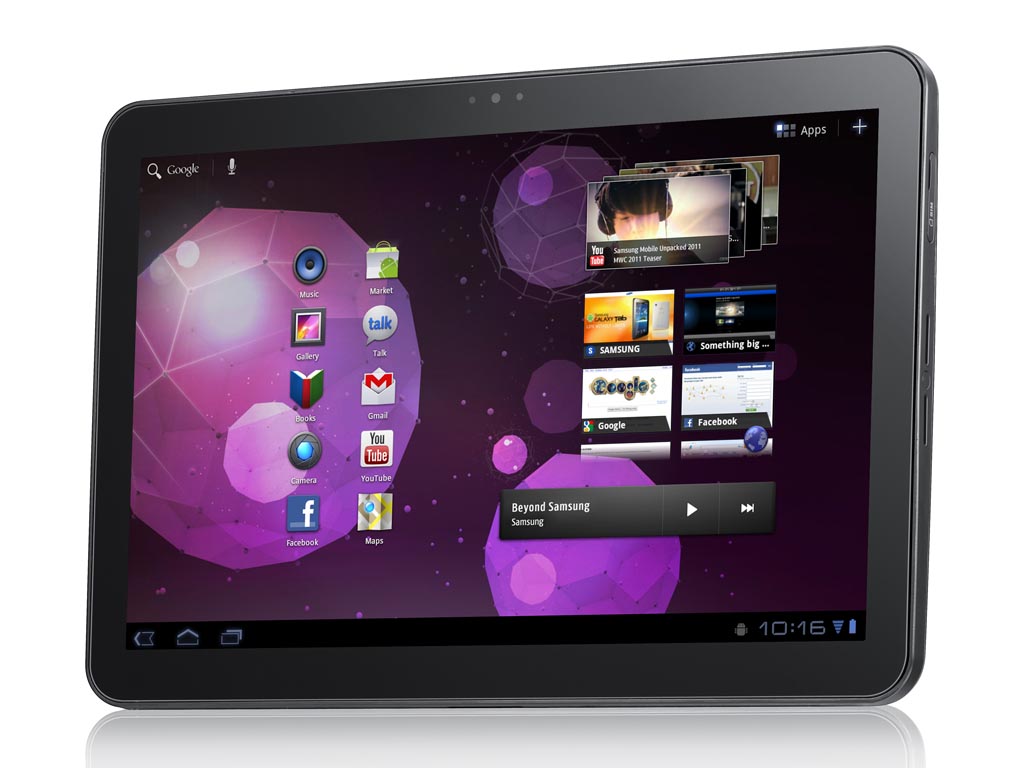 Samsung Galaxy Tab
Samsung Galaxy Tab – The Samsung Galaxy Tab 10.1 is the successor to the original Samsung Galaxy Tab (7″) which surprisingly enough, was one of the first mainstream Android tablet models released. The Samsung Galaxy Tab 10.1 features the Android 3.1 OS (Honeycomb), an Nvidia Tegra 2 (1GHz) dual-core processor, 1GB DDR2 installed RAM, a 2MP front facing camera, a 3MP rear facing camera with flash and HD (720p) video recording. The Samsung Galaxy Tab 10.1 also includes a 10.1″ TFT LCD capacitive touchscreen display, integrated wi-fi 802.11 b/g/n and Bluetooth 3.0 functionality. The Samsung Galaxy Tab 10.1 is available in three different models; a 16GB model ($499.99), a 32GB model ($599.99) and a 64GB model ($699.99).
– The Samsung Galaxy Tab 10.1 is the successor to the original Samsung Galaxy Tab (7″) which surprisingly enough, was one of the first mainstream Android tablet models released. The Samsung Galaxy Tab 10.1 features the Android 3.1 OS (Honeycomb), an Nvidia Tegra 2 (1GHz) dual-core processor, 1GB DDR2 installed RAM, a 2MP front facing camera, a 3MP rear facing camera with flash and HD (720p) video recording. The Samsung Galaxy Tab 10.1 also includes a 10.1″ TFT LCD capacitive touchscreen display, integrated wi-fi 802.11 b/g/n and Bluetooth 3.0 functionality. The Samsung Galaxy Tab 10.1 is available in three different models; a 16GB model ($499.99), a 32GB model ($599.99) and a 64GB model ($699.99).
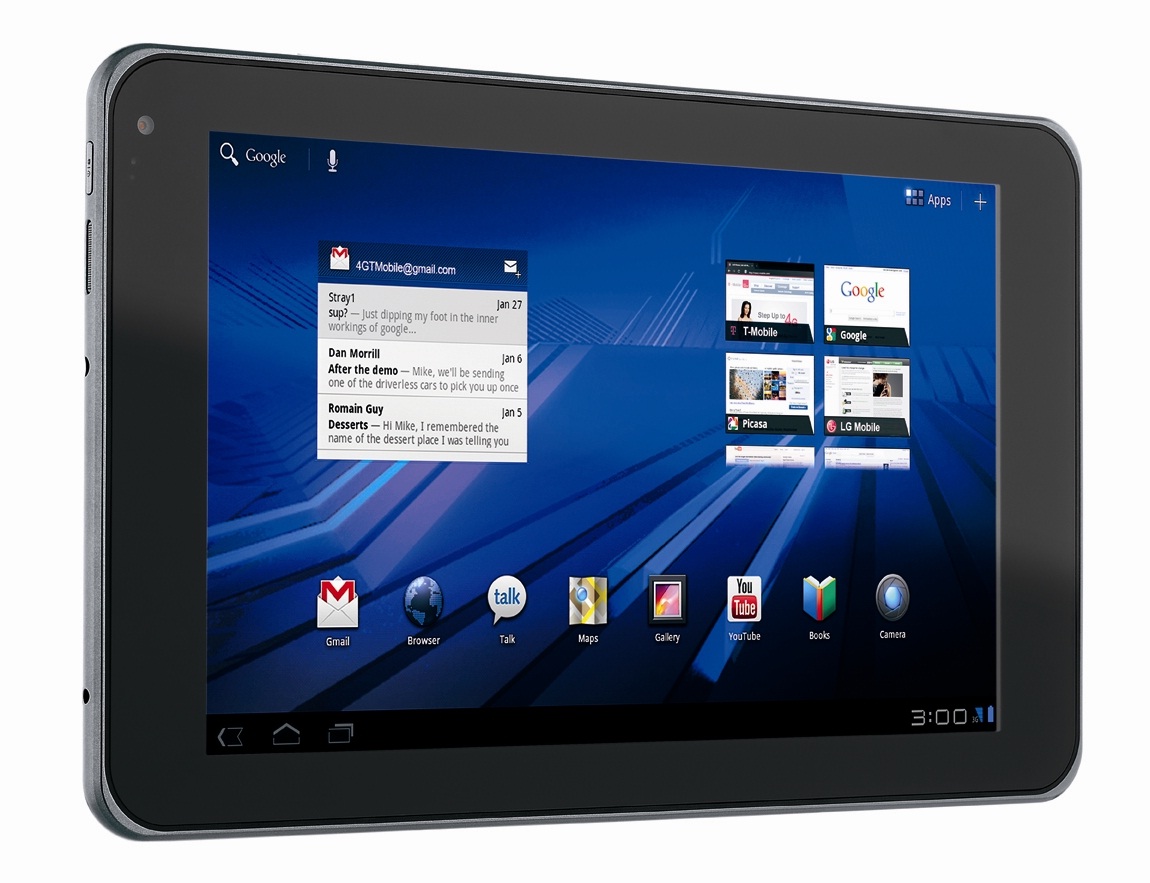 LG G-Slate
LG G-Slate – The LG G-slate features Android 3.0 (Honeycomb), backed by an Nvidia Tegra 2 (1GHz) dual-core processor and 1GB DDR2 installed RAM. The G-Slate is a “candybar” style Android tablet sporting an 8.9″ capacitive touchscreen display that is also 3D capable. The LG G-slate also includes a 2MP front facing camera, a 5MP rear facing camera, 32GB internal storage space, with LED flash and HD video recording support, integrated Bluetooth and wi-fi 802.11 b/g/n functionality. The LG G-slate is available for $749.99 off-contract or for $529.99 with a 2-year contract with T-mobile.
– The LG G-slate features Android 3.0 (Honeycomb), backed by an Nvidia Tegra 2 (1GHz) dual-core processor and 1GB DDR2 installed RAM. The G-Slate is a “candybar” style Android tablet sporting an 8.9″ capacitive touchscreen display that is also 3D capable. The LG G-slate also includes a 2MP front facing camera, a 5MP rear facing camera, 32GB internal storage space, with LED flash and HD video recording support, integrated Bluetooth and wi-fi 802.11 b/g/n functionality. The LG G-slate is available for $749.99 off-contract or for $529.99 with a 2-year contract with T-mobile.
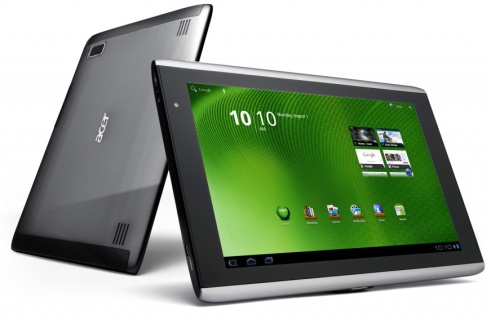 Acer Iconia Tab A500
Acer Iconia Tab A500 – The Acer Iconia A500 is a 10″ Android tablet running Android version 3.2 (Honeycomb). The Iconia A500 features an Nvidia Tegra 2 (1GHz) dual-core processor paired with 1GB DDR2 installed RAM and 16GB or 32GB of internal storage space; all displayed via a 10.1″ capacitive touchscreen display. The Acer Iconia Android tablet also includes a 2MP front facing camera, a 5MP rear facing camera, a micro HDMI output, and of course GPS and location services capabilities.
– The Acer Iconia A500 is a 10″ Android tablet running Android version 3.2 (Honeycomb). The Iconia A500 features an Nvidia Tegra 2 (1GHz) dual-core processor paired with 1GB DDR2 installed RAM and 16GB or 32GB of internal storage space; all displayed via a 10.1″ capacitive touchscreen display. The Acer Iconia Android tablet also includes a 2MP front facing camera, a 5MP rear facing camera, a micro HDMI output, and of course GPS and location services capabilities.
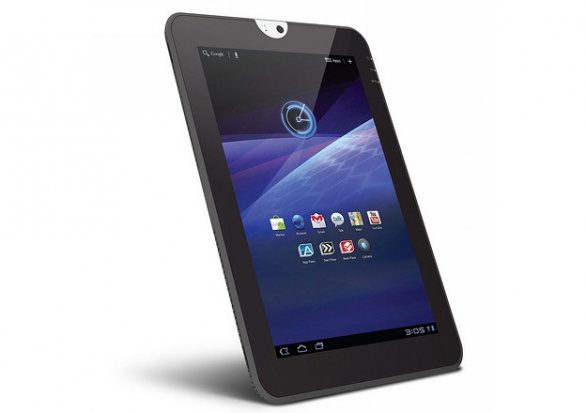 Toshiba Thrive
Toshiba Thrive – The Toshiba Thrive is a 10″ Android tablet running the Android 3.1 OS (Honeycomb). The Thrive features an Nvidia Tegra 2 (1GHz) dual-core processor, 1GB DDR2 installed RAM, a 10.1″ capacitive touchscreen display and integrated Bluetooth and wi-fi 802.11 b/g/n wireless support. The Thrive also includes a 2MP front facing camera, a 5MP rear facing camera with full HD video capture support, a microSD expansion slot for added storage, and an HDMI output. The Toshiba Thrive is available in three separate models; an 8GB model ($399), a 16GB model ($499) and a 32GB model ($599).
– The Toshiba Thrive is a 10″ Android tablet running the Android 3.1 OS (Honeycomb). The Thrive features an Nvidia Tegra 2 (1GHz) dual-core processor, 1GB DDR2 installed RAM, a 10.1″ capacitive touchscreen display and integrated Bluetooth and wi-fi 802.11 b/g/n wireless support. The Thrive also includes a 2MP front facing camera, a 5MP rear facing camera with full HD video capture support, a microSD expansion slot for added storage, and an HDMI output. The Toshiba Thrive is available in three separate models; an 8GB model ($399), a 16GB model ($499) and a 32GB model ($599).
Android Tablet Honorable Mentions
There are of course many Android tablet models available that we have not listed above, and some that could easily fit the taste of some consumers. Therefore we’ve further included some honorable mentions that would also make great iPad alternatives. Keep in mind these additional Android tablet models don’t fit the “best” moniker, which means they offer older model versions, older software or OS options or even sub-par hardware; that doesn’t necessarily mean they aren’t good products.


 3:33:00 am
3:33:00 am
 admindown_tron
admindown_tron

 Many don’t know that the Google Android OS is just as polished and easy to use, and it has also made its way to tablet devices. Fortunately for anyone interested in worthy iPad competition, there has been a significant rise in the release of Android-based tablets. Android tablets offer worthy competition to the iPad and include identical, if not better, features which are often provided at a lower price.
Many don’t know that the Google Android OS is just as polished and easy to use, and it has also made its way to tablet devices. Fortunately for anyone interested in worthy iPad competition, there has been a significant rise in the release of Android-based tablets. Android tablets offer worthy competition to the iPad and include identical, if not better, features which are often provided at a lower price.




























